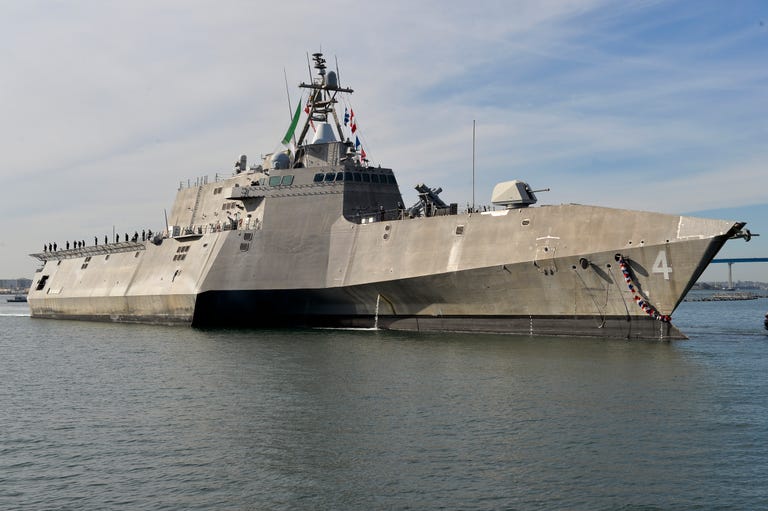The US Navy Could Grow to 355 Ships by 2032
The key is taking care of them.
By Kyle Mizokami
U.S. NAVY PHOTO BY MASS COMMUNICATION SPECIALIST 2ND CLASS ANTHONY N. HILKOWSKI
The U.S. Navy wants to grow its fleet to 355 ship, and it may have found a way to reach that goal a full 20 years early: by keeping ships in the fleet longer. Surface ships, including frigates, destroyers, cruisers, and even amphibious ships could extend their operational lifespans while at the service beefs up its total number of vessels.
U.S. Naval Institute News reports that Vice Admiral Tom Moore, head of Naval Sea Systems Command, believes the Navy could reach its vaunted 355-ship fleet by putting into practice something already done with aircraft carriers: periodically putting them into drydock for maintenance and upgrades. This would stretch the lifespan and usefulness of existing ships, a cheaper and more cost-effective alternative to simply buying more ships.
The Navy has had notorious difficulty plotting a course to its 355-ship goal. U.S. Navy warships are highly capable and expensive, and a lot buys a little. Even a budget increase designed to grow the fleet has done so modestly. Coupled with the Navy’s tendency to retire warships relatively early and the service ends up taking five steps forward and four steps back.
But what if Littoral Combat Ships served for 32 to 35 years instead of the 25 years fpr Navy frigates? What if the big deck amphibious ships, such as the Wasp-class troop carriers, served 46 to 53 years instead of their projected 40 years? What if the Lewis & Clark class cargo ships served 50 instead of the original 40 years? That's the kind of thinking Moore is proposing.
Under past projections, the Navy thought it would take until 2052 to reach the 355-ship goal. With this new concept, it could reach that goal within a 2032-2035 timeframe. By slowing the rate of retirement, the Navy could move to taking five steps forward and just three steps back and reaching its goal sooner.
Would it work? As Moore notes, the U.S. Navy tends to decommission warships that go on to serve in foreign navies for up to another twenty years. India has old amphibious ships, and several allies sail older frigates and destroyers, some with significant weapon upgrades. Moore thinks the Navy’s open architecture system and the versatility of weapons such as the Aegis Combat System and the Mk. 41 vertical launch missile silo mean the current surface force could remain relevant for a long time—with periodic weapons and electronics upgrades, of course.
No comments:
Post a Comment